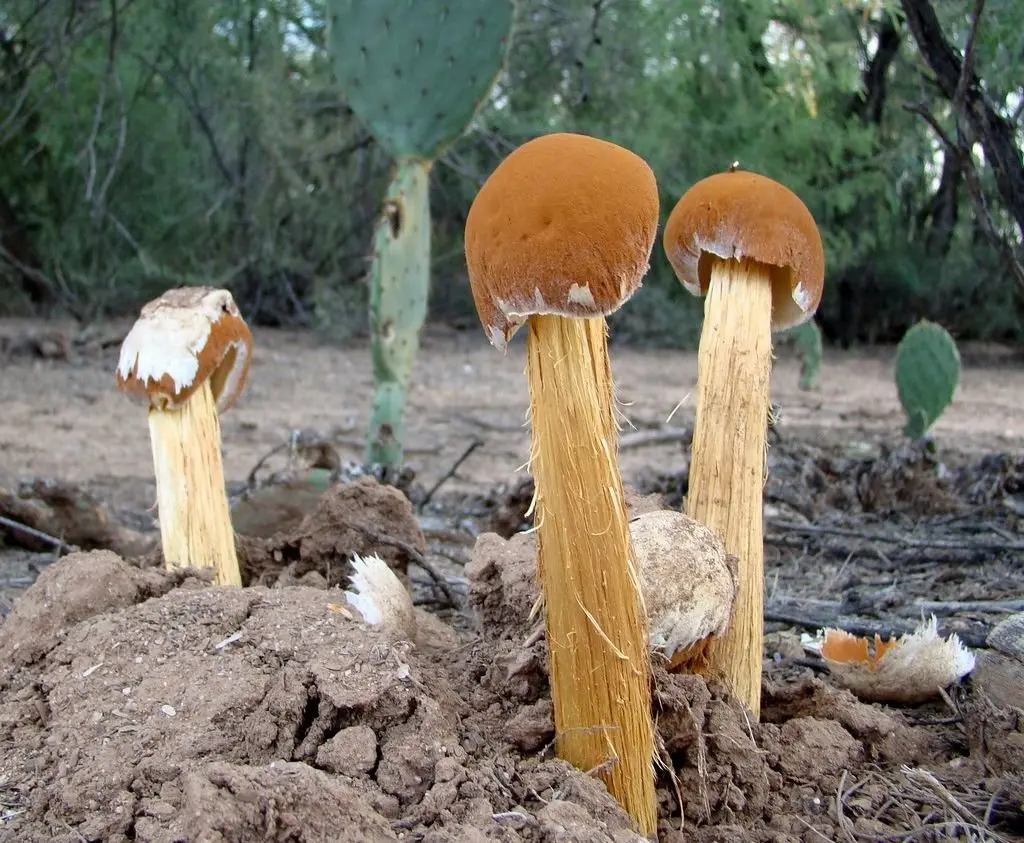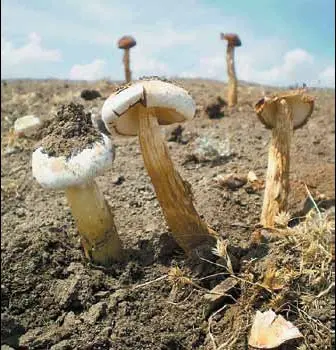Battarrea phalloides (Battarrea phalloides)
- Division: Basidiomycota (Basidiomycetes)
- Subdivision: Agaricomycotina (Agaricomycetes)
- Class: Agaricomycetes (Agaricomycetes)
- Subclass: Agaricomycetidae (Agaricomycetes)
- Order: Agaricales (Agaric or Lamellar)
- Family: Agaricaceae (Champignon)
- Genus: Battarrea (Battarrea)
- Type: Battarrea phalloides (Veselkovy Battarrea)
- Battarreya veskovidnaya

Veselkovy Battarrea (Battarrea phalloides) is a rare steppe species of inedible mushrooms of the Tulostomaceae family.
fruiting body:
in a young fungus, fruiting bodies are located underground. The bodies are ovoid or spherical in shape. The transverse dimensions of the fruiting body can reach five centimeters.
Exoperidium:
rather thick exoperidium, consists of two layers. The outer layer has a leathery structure. As the fungus matures, the outer layer breaks and forms a cup-shaped volva at the base of the stem.
Endoperidium:
spherical, whitish. The surface of the inner layer is smooth. Along the equator or a circular line, characteristic breaks are noted. On the leg, a hemispherical part is preserved, which is covered by the gleba. At the same time, the spores remain uncovered and are washed away by rain and wind. Ripe fruiting bodies are a developed brown leg, which is crowned with a slightly depressed white head, with a diameter of three to ten centimeters.
Leg:
woody, swollen in the middle. To both ends the leg is narrowed. The height of the leg is up to 20 centimeters, the thickness is about one cm. The surface of the leg is densely covered with yellowish or brownish scales. The leg is hollow inside.
Soil:
powdery, rusty brown.
Pulp:
The pulp of the fungus consists of transparent fibers and spore mass. Spores are scattered with the help of capillium, due to the movement of fibers under the action of air currents and changes in air humidity. The pulp is dusty for a long time.

Spore Powder:
rusty brown.
Spread:
Battery Veselkovaya is found in semi-deserts, dry steppes, on hilly sands and loams. Prefers clay and sandy dry soils. Grows in small groups. Fruiting from March to May, and from September to November.
Edibility:
Battarrea veselkovaya is not eaten because of the woody solid fruiting body. The mushroom is edible in the egg stage, but it is difficult to find, and it does not represent a special nutritional value.









